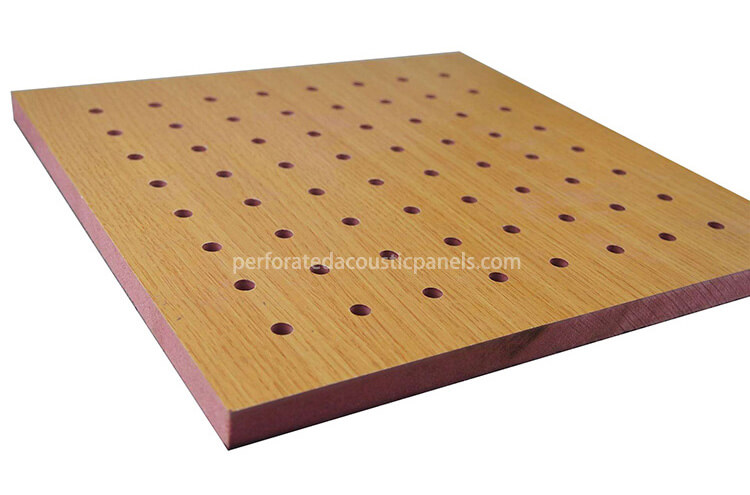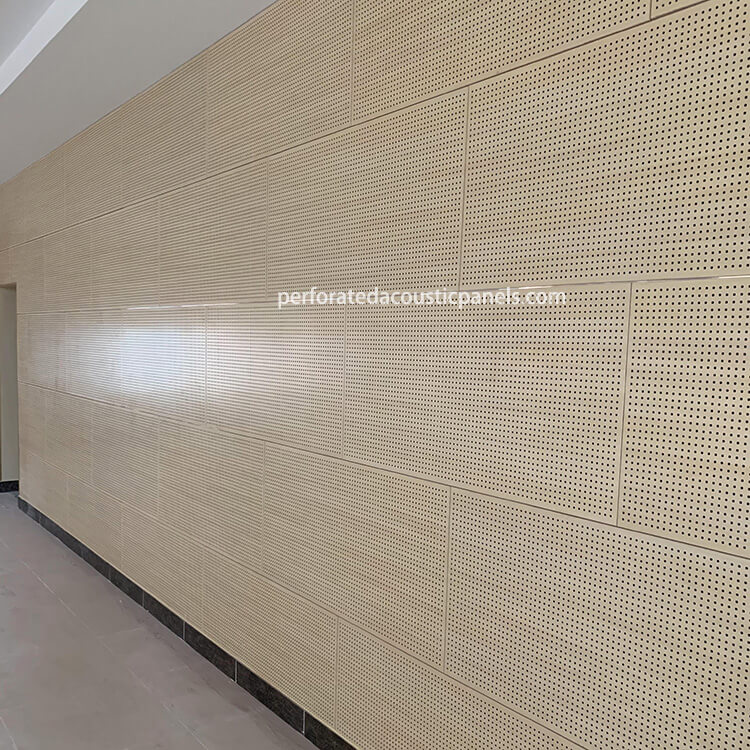Wood Acoustical Panels
The wood acoustical panels can provide the beauty of solid wood and has the additional advantage of acoustic performance. It includes grooved wooden panel and perforated acoustic panel. Acoustic wood walls are manufactured in various configurations to meet most acoustic requirements. Although flat, rigid materials are inherently reflective, perforations can achieve a balance between sound reflection and absorption. The perforated acoustical wood paneling is combined with an absorbent backing for a beautiful finish and excellent acoustic performance.
The acoustical wood panels come with a standard black non-woven textile soundproof backing. Additional absorption can be achieved by filling the back of the wood acoustic wall with additional absorbent acoustical wood panel material, and a minimum 100mm cavity is required in wall installation. Absorption of the sound absorbing panels is achieved by the most advanced CNC machinery, which produces a series of elongated perforations (grooves) or circular perforations with regular or irregular patterns, or a series of linear perforations or grooves on the back Groove. Through this state-of-the-art technology, an NRC as high as 0.90 can be achieved.
Wood Acoustical Panels Specification
• Provide Class B1 fireproof composite material
• NRC value up to 0.90
• MDF, MgO substrate
• Flush or reveal edge details
• Standard wood size: 600x1200mm, 600x600mm
• Available custom board sizes

The wooden wood acoustic walls are laminated with melamine or coated with transparent UV-polyacrylate UV-enhanced paint. Other gloss and custom dyeing are available upon request.
The wood acoustical panel is a real wooden wall or ceiling treatment with perforations or grooves that can reach an NRC value of up to 0.90. The system is built on an MDF core, and the veneer is decorated with melamine or UV-polyacrylate varnish. Standard wood acoustic walls have two edge details: exposed edge and flush edge. The exposed edge details leave a 10mm groove between the boards, and there are wooden strips to hide the nails. The flush edge details have edges that butt together, so no wooden strips are needed. Standard wood acoustical panels and acoustic perforated ceiling provide 24 kinds of standards and 40 kinds of custom veneers.
